Nine of us met on Saturday, 4 May 2013 for yet another pelagic outing in the Singapore Straits, entering our third year with around 20 trips. It seemed like a long time ago as our last outing was October 2012.
The ICA boat met us promptly as we arrived on station at Little Sisters around 6:30am, but it still took about a half hour to process the dozen passports on our boat, this could be improved, and it would need to be if the Straits were ever to support tourism which it should do as there are lots of interesting things out there, birds, mammals and scenery! Still getting fully underway by 7:00am wasn’t too bad. Rounding the Southern Islands and getting out into the middle of the Straits we came across our first Bridled Tern resting on flotsam around 7:40am. There was lots of debris floating in the water, the sea birds could land anywhere. As the SW monsoon arrives it will push more debris towards Singapore.
And then around 8:20am I got two small “ducks” in my bins, oops not ducks, petrels, but they flushed as the boat neared. They were located at the first green marker on the map (towards the end of this post). Still we were able to follow the petrels for the next ten minutes or so.
At least one of them seem very tired (from the long migration?) and was frequently landing in the water. But the plumage was very fresh
as compared with the fall migration plumage (seen here).
Now we were almost upon the Cable Buoy which consistently has been one of our most productive spots. And it was again today with around a dozen Lesser Crested Terns and several White-winged Black Terns feeding and circling the buoy for the longest time (from about 8:33 to 8:42am). The White-winged Black Terns were in stunning breeding plumage and were quite a sight! I think it was the first time seeing the full summer plumage for some of us, it certainly was for me. They must be about to migrate North. They feed by picking food off the surface. You can see the size comparison with the Lesser Crested Terns.
The Lesser Crested Terns feed by plunge diving, this one came up with a small fish.
Already today the action had been pretty good, but it was about to get even better. Around 9:28am we picked up a frigatebird circling high in the sky. Desperate to get better views we asked the boatmen to speed up, we reached up to 26 kilometers per hour. It had been since August 2011 that we last saw two frigatebirds, and they were way out in the Straits, one at Horsburgh Lighthouse. Those had been Lesser Frigatebirds, and were very high in the sky. We were to be much luckier today, as this frigatebird decided to show us how to fish. The bird stayed with us, circling, diving for fish until at least 9:48am. Also flying well off into the middle of the Straits, clearly in Singapore waters then. Our track and the frigatebird’s area can be seen on the map between two green GPS markers and a light yellow circle.
Not long after the first sighting of this frigatebird, folks with more experience seeing this species were calling out Christmas Island Frigatebird. A tick for all three country lists, but less important for Indonesia with a colony in Jakarta bay or Malaysia with a colony near Tioman, but important for Singapore as the last confirmed sighting was in 1986! And a globally Critically Endangered species too. It seems pelagic birds don’t often come into the heart of the Straits unless they are migrating (Bridled Terns, Swinhoe’s Storm Petrels) and the crested terns, Lesser Crested and Swift (Greater Crested). The skuas, frigatebirds, boobies, and phalaropes are rare visitors. What this is saying about the Straits is not clear.
Midway through our encounter with the frigatebird, apparently at least 3 dolphins were seen at about 9:35am! But which species we can’t tell.
After entertaining us with close ups and flybys, we lost sight of the frigatebird. It was really tough photographing this one, it seemed to be moving generally East right into the morning sun. And it was fast, hard for the boat to keep up. And the boatman’s awareness of photographic requirements was a bit limited, generally lining us up with the bird perfectly in front of the sun! But still the behavior was entertaining, it plunge dived for fish at least twice, coming up lucky both times; and both times playing with it’s food midair, dropping it and then catching it again.
Finally we lost sight of the frigatebird and continued East passing several of the Bintan to Singapore ferries.
Now further out into the Straits and well past Singapore waters we picked up the frigatebird again at 10:24am (at a third green marker and smaller yellow circle). We stayed with the bird until 10:32am, but this time it didn’t fish but was soaring overhead. We all finally called it a day with this bird, as we’d seen enough. Interestingly the frigatebird was completely unfazed by the boat. The smaller birds: petrels and terns would definitely be flushed by the boat, but the frigatebird just didn’t pay us any attention.
Now we reached the limit of our excursion at 11am, travelling much further East than we usually do, right out to a buoy and several small islands at the Eastern edge of peninsular Malaysia. Horsburgh Lighthouse was not so far beyond. But the buoy was devoid of birds, and we settled in for the return journey which because it is now midday often sees less activity. However, around 11:40am a solitary shearwater was spotted and Jia Sheng got a shot of a most likely Short-tailed Shearwater. Sadly the sighting was brief and not everyone got onto this.
The next flurry of activity would not be until nearly 2:00pm when a group of about five petrels were seen nearly opposite downtown Singapore. Finally reaching our berth in Sentosa Cove around 3:15pm we were tired but happy with an eventful outing which included a lifer and/or country list tick for almost all of us.
We are definitely holding out for a sponsor to give us a ride on the shimmering black boat with two tall masts for our next outing. But until then this crew is signing out. A bit larger collection of bird photos from this trip can be seen here (May 4 Pelagic).
Thanks to Colin for organizing the trip, the GPS tracking and ID confirmations. Final tally from Colin:



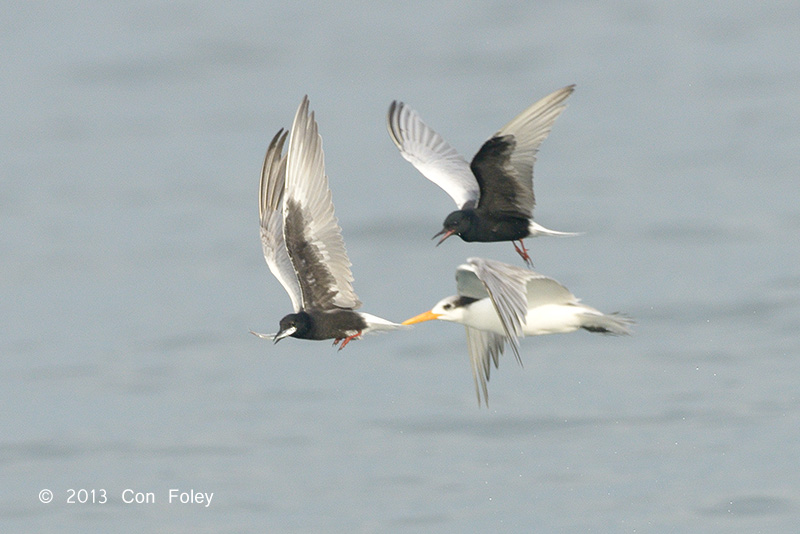
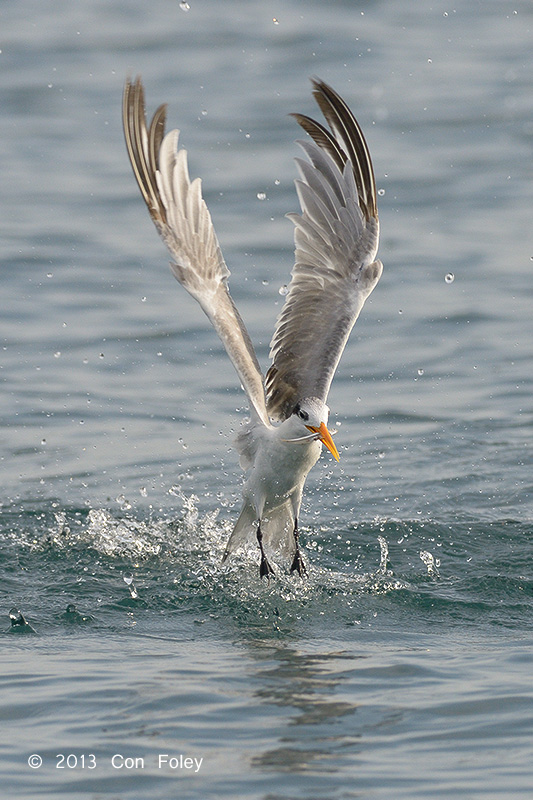
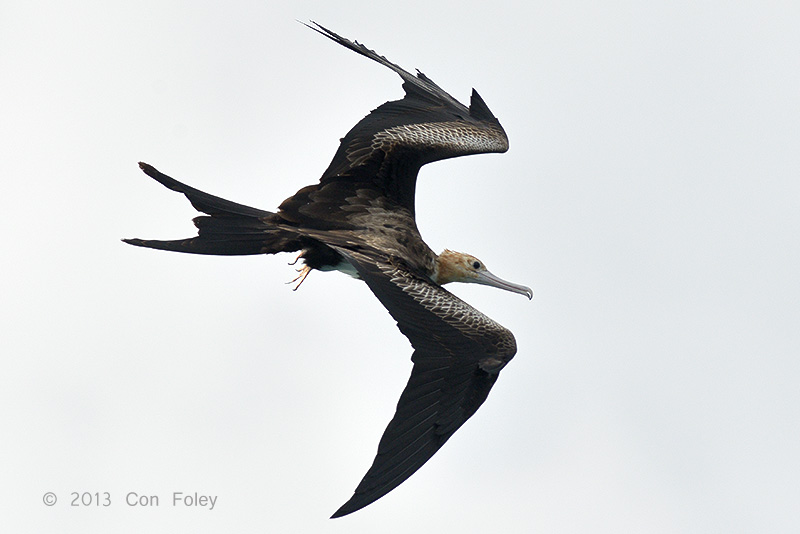

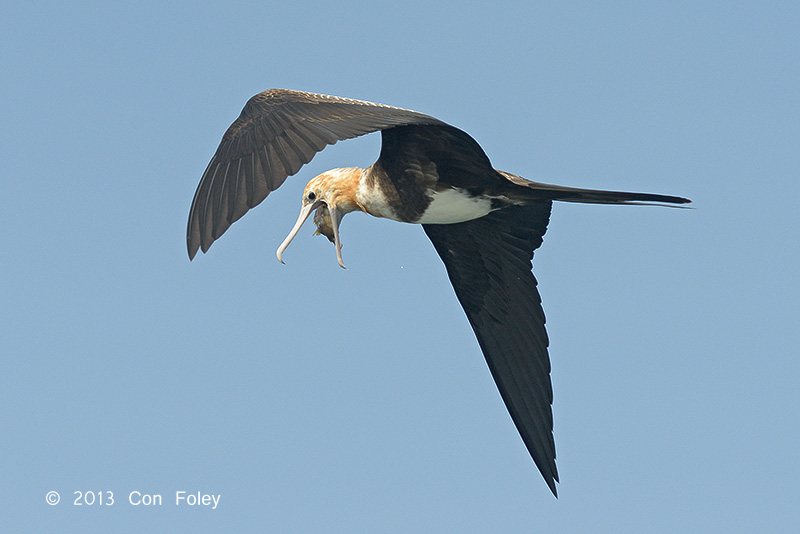

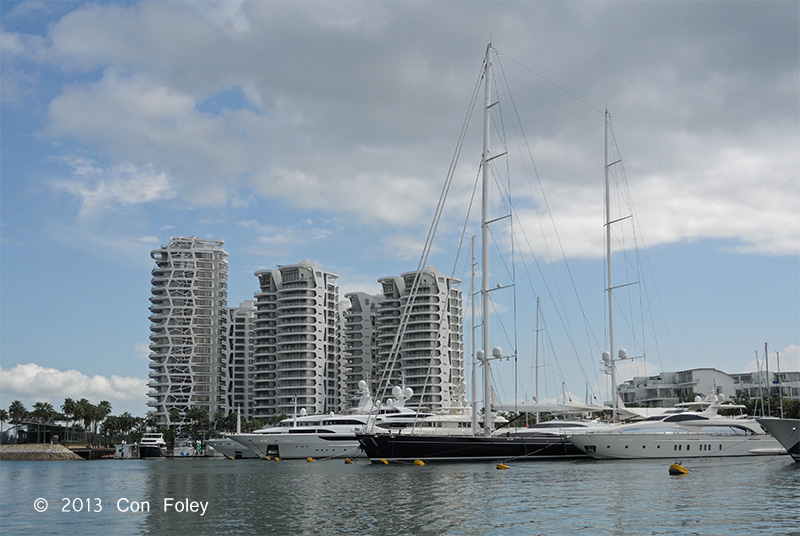
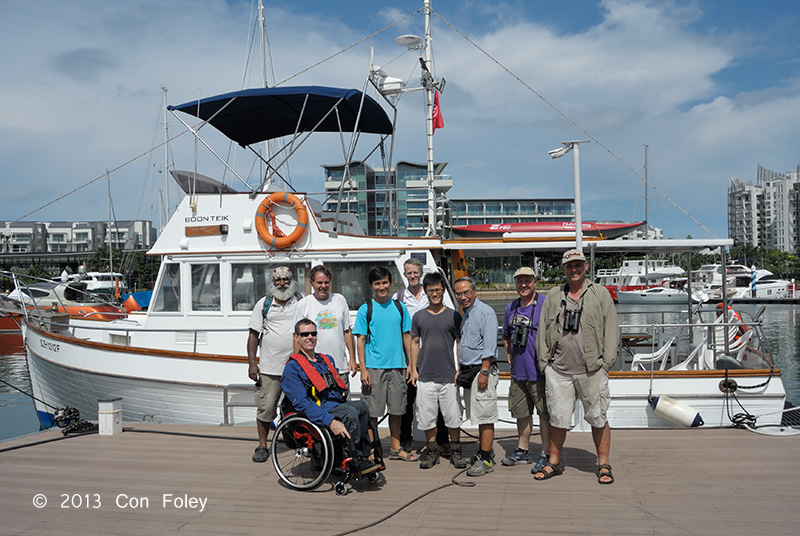
Hi Con,
Did you use the Nikon 80-400mm for the above pelagic trip?
Regards
Ronnie
Hi Ronnie,
No, I would have liked to because the 80-400 is lighter, but I needed more reach, so I used a 300 f2.8 with a 2xTC.
Cheers, Con